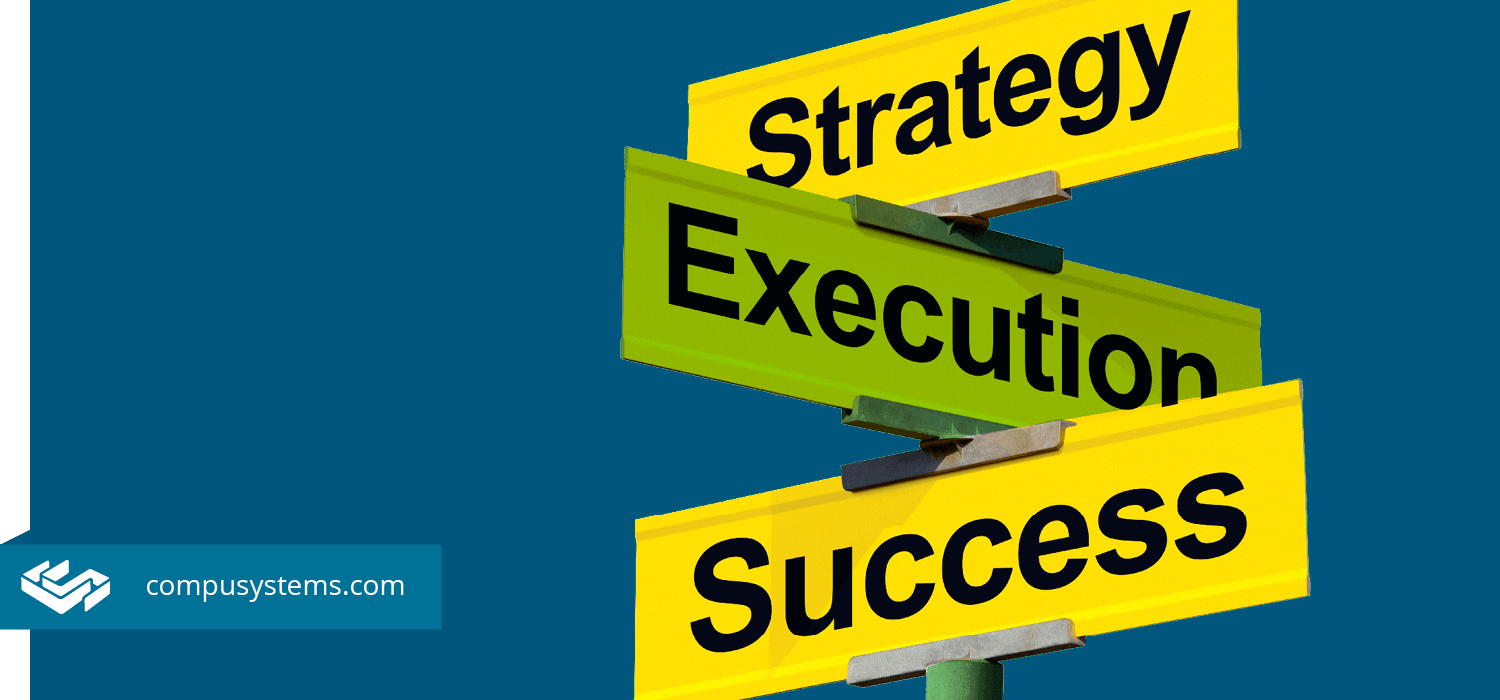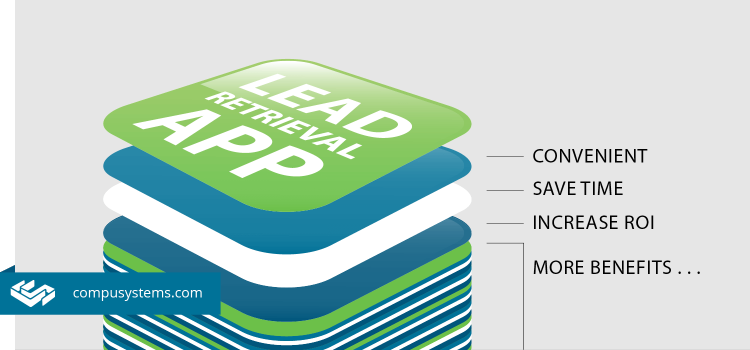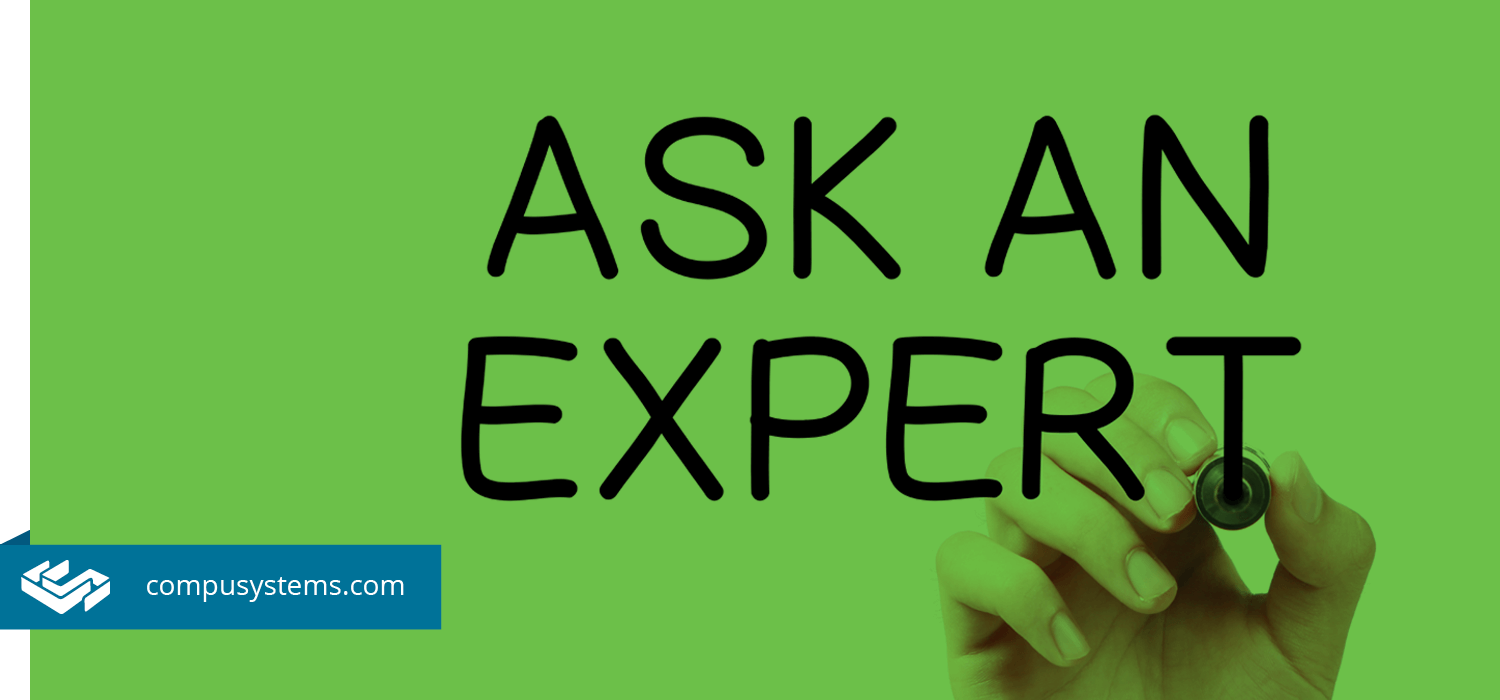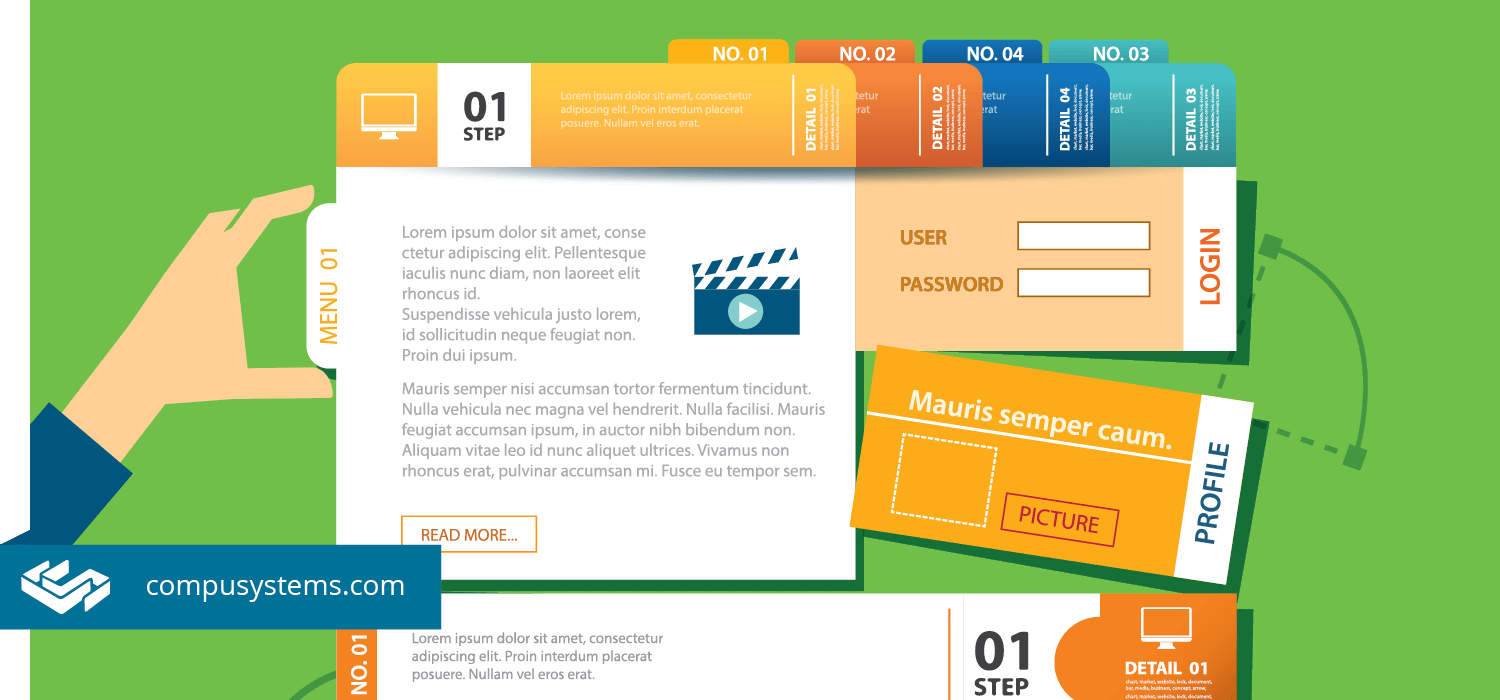Top 10 Tips to Ensure a Successful Opening Day

Opening Day. It’s an exciting time for show organizers, as well as exhibitors. All of the hard work and preparation that has been put in over so many months, by so many people, culminates into this all-important day. You would be hard pressed to find a better authority regarding opening day than Mike Blazejewski, CompuSystems’ Vice President of Field Operations. Mike has been in the trade show business for 16 years and has overseen the onsite operations for more than 250 shows! In this blog, Mike shares his top 10 tips to ensure a successful opening day.
1. Plenty of Signage
Trade shows can be stressful and typically, badge pickup isn’t high on a registrant’s list of priorities. Make sure there is clear signage leading to the registration areas, as well as clear signage inside. Also, keep it simple. For example, in “Express Badge Pickup” have the sign read, “I have my bar code” so it’s clear what that section of counters is for. Color coding helps too. Each designated registration area can have a different color. On the attendee’s confirmation, you can then have verbiage that says, “Once onsite, take this bar code to the blue “I have my bar code” area within registration.”
2. Hire Great Line Monitors
Line monitors are pivotal for guiding the masses of people that flood in on opening day. Make sure you have an ample amount directing registrants to the correct lines. It not only speeds up the lines, but it also saves the attendee from hearing the inevitable (and loathed) “I’m sorry, I can’t do that here. Please go wait in that line.” response.
3. Resend Confirmations the Day Before the Show
These days we are bombarded with emails. Receiving another confirmation right before the show makes it easier for the attendee to find their bar code and get their badge generated quickly.
4. Make Sure Your Registration Vendor’s Scanners Can Read Smartphones
It appears that about 50% of attendees no longer bring paper printouts onsite. If your bar code scanners can’t read smartphones, your lines will slow down tremendously.
5. Shows are Seeing Higher App Adoption Rates
Send push notifications the morning of opening day to remind registrants where registration locations are. Also, most registration vendors can integrate with app providers. Make sure their bar code confirmation is located within the app.
6. Make Sure the Registration Staff Knows Your Show Rules and Info
Registration is quite literally a big information counter. They get asked every question under the moon. Make sure all staff is given a brief overview of the show and most commonly asked questions. Tape cheat sheets to all the typists’ terminals.
7. Make Sure Help is Readily Available
Your registration vendor should be out in the registration areas, available to help and easy to locate. Show management should also be readily available in all locations to deal with any escalated issues. Attendees don’t like to wait; make sure help is always a stone’s throw away.
8. Use Remote Registration Areas
If it’s in the budget, put a small badge pickup area in the large, show hotels. Even better, if you have a good amount of non-local attendance, put a badge pickup area in baggage claim at the airport. Even pickup areas near the hotel bars for a few hours at night will greatly help. There is nothing better than seeing someone walk into the convention center already wearing their badge!
9. Go over Registration and Temporary Staff Hours with a Fine-Toothed Comb
There is nothing worse than being under/over staffed or opening registration too late. If you have an early morning breakfast or session for which attendees need a badge, make sure registration is open at least an hour before it starts. If not, you will likely walk into a group of not-so-happy campers in the morning.
10. Make Sure You Have the Correct Amount of Equipment Needed to Get the Job Done on Opening Morning
It’s a fairly simple math equation. If you have history on the show, use it. Look at how many people historically pickup their badge in the first four hours of opening day and make sure you have enough stations to cover that. Most registration companies have formulas that do this for you; make sure to heed their advice! Too little equipment will give you monstrous lines. Too much equipment can give the feeling that show attendance is down. Find the perfect ratio and your opening day will be a success from all sides. And remember, keep those lines moving! When there are lines, be polite and work with a smile but try to get the attendees in and out as fast as possible. Limit handouts at the registration counters to speed up this process.
All told, there are many different moving parts when it comes to having a successful opening day. Now that you’ve read Mike’s tips, perhaps you can institute some of them in an upcoming event to see the difference they can make. Good luck!
Advantages of App-based Lead Retrieval

Gone are the days of collecting business cards and clunky lead recording equipment. With the world moving into app-based software and solutions, why should lead management be any different? Over the past several years, app-based lead retrieval has truly become the new standard.
Jen Mitchell, CompuSystems’ Vice President of Business Development, discusses the advantages for exhibitors, as well as show organizers and why app-based lead management solutions are here to stay.
Exhibitors
Exhibitors have the convenience of using their own phone or tablet to collect leads. There is no longer a need to stand in line to pick up a unit or return it at the close of the show. With less lead retrieval equipment required, it also offers the option of combining the Exhibitor Lead Management Services Area with Exhibitor Registration, improving the overall exhibitor experience by creating a one-stop shop option. After all, what exhibitor wouldn’t want one less line to stand in? Additionally, the learning curve that is commonly associated with custom lead recording units is all but eliminated; built in app-based help and even how to videos are typically made available by vendors via the app.
Exhibitors never know when they might need to capture a hot lead. Well-designed apps allow exhibitors the opportunity to collect leads even when they are not on the trade show floor. Leads can be taken anywhere, at any time, even when there is no internet connectivity. Just scan now and sync later!
In addition to allowing lead capture anytime and anywhere, well-designed apps allow the exhibitor to survey their leads, as well as attach standard and custom qualifiers to their record. They allow exhibitors to edit lead information, add notes and instantly send marketing materials to leads directly from the app while the attendee is right in front of them!
Having to wait until days after the show to get a file of your leads is a thing of the past. Arguably, the most important benefit to app-based lead retrieval is the instant, real-time access to sales leads. Not only can you immediately follow-up with your leads, but the follow-up process as a whole has been completely streamlined in many cases.
Show Organizers
We’ve all heard the expression, “less is more”. For the show organizer, this rings especially true with regard to space required in the Exhibitor Services Area. As mentioned above, due to exhibitors using app-based devices, the need for additional counters, chairs and space to store bulky hardware is significantly decreased, subsequently increasing the savings for the show organizer. Additionally, with quicker lead follow-up available for exhibitors, they will likely increase their ROI making the event a “can’t miss” for the future.
Another huge advantage to app-based lead retrieval is the ability to integrate cutting-edge beacon technology with your lead retrieval app. Not only does it offer the ability to generate additional revenue, but it also really changes the way that show organizers look at their data. Beacons allow for:
• Instant alerts to registrants from the show organizer
• Instant alerts to registrants from exhibiting companies that have purchased the service (additional revenue generator)
• Extremely accurate analytics and heat mapping
The benefits of app-based lead retrieval speak for themselves and are increasing every day. If you don’t already offer this as an option, ask your vendor for additional information. They would be happy to discuss their specific app’s functionality with you.
Tips for Organizers When Providing Registration Vendors with Event Set Up Specifications

Creating a registration database and website that marries your organization’s goals with aesthetics requires collaboration, creativity and most importantly, building a partnership with your registration vendor.
Alexandra Schneider, CompuSystems’ Director of Event Services Management, offers some tips to help simplify the set up process and ensure your event’s success.
1. Help Us Help You
At the beginning of the set up process, be sure to clearly identify and define your overall registration goals and your biggest concerns. To successfully educate your registration partner, conduct an internal review of your goals with your team. Great things happen when marketing, finance, registration management and membership come together to discuss what you need out of your registration process prior to providing set up specifications to your vendor. For example, are you interested in getting people registered as fast as possible? Is giving a registrant incentive to upgrade their registration type important? Is there a past issue that you’d like to avoid? By giving your registration vendor a clear picture and by letting them be creative, the set up process becomes collaborative and allows everyone to be invested in the success of your event.
2. Go With the Flow
Give your vendor a copy of your registration form, in addition to access to your previous registration website via screenshots or a mockup template. Allowing them to walk through the registration process from the previous year gives your vendor an appreciation for the information that is important to you and your event. In addition, be sure to look at and discuss previous year’s reports, registration confirmations and business rules to help guarantee that you will get the data, reporting and analytics you need from your vendor to continue the success of your event.
3. No Such Thing as a Minor Detail
Information that may seem minor to you may be very important to your registration vendor. For example, do you have a business rule that would impact the flow of the registration process or website? Do you allow someone to finish a website registration without submitting payment? You’d be surprised at how often a single business rule addition, removal and/or edit which is relayed late in the set up process results in significant registration complications. By providing registration rates, packages, options, membership rules, sample files, and artwork you’re giving your registration vendor the details which help deliver a better and more accurate product. Let your registration vendor be your partner for success.
4. Marketing Tools
Provide your registration vendor with your event’s big picture marketing strategy and goals, as well as your specific marketing programs. By doing so, they can recommend promo codes, tracking codes, link tracking, click counts, email open rates, and many other useful tools that can help you meet your objectives.
5. Review the Result Together
Once your registration vendor hands over the registration website, go through it with your entire team, together. With this methodology, everyone has a say in the final product and your registration vendor can help you go live with the site faster. Remember that everyone in your organization should feel like the registration vendor is their partner in helping to make your event successful.
In sum, registration vendors are experts in their field. Each event is unique and they are accustomed to having many distinct guidelines given to them regarding all aspects of registration, both onsite and in advance of the show. By giving them all of your requirements upfront and letting them explore potential solutions based on best practices, you enable them to be your partner. Working together as a team will ensure that your goals are accomplished in a timely, efficient and well-organized manner.
Best Practices for Registration Website Customization

Registration websites are the gateway to your show. They are the first impression an attendee has and can often dictate the opinions and experiences that they will have going forward. It is important for show organizer’s to carefully plan and focus in on making the user experience simple, interactive and as enjoyable as possible.
CompuSystems’ Senior Director of Programming, Frank Anselmo, outlines some tips and tricks for customizing registration websites to maximize your attendee’s satisfaction when registering online.
1. Keep the user in mind.
When you are in the stages of planning and developing your registration website be sure to think about the end user. Your audience is critical in making customization decisions.
2. Go mobile.
Since the vast majority of attendees own a smartphone, be sure to consider making your registration website mobile friendly.
3. Less is more.
Remember that your registration websites are not blog posts or company websites. Keep the material available brief and informative as attendees are not likely to thoroughly read the full site. This means keeping requirements for attendees simple and user friendly. Avoiding excessive button clicks and minimizing required fields can also be helpful.
4. Easy on the eyes.
Registration websites should be aesthetically pleasing. Cut down on overwhelming clutter; white space can be a great way to break up a website into sections. Colors can also be an issue with websites because they subconsciously evoke emotions. Brighter colors will tend to evoke a more intense sense of emotion, so use them sparingly.
5. Read it like a book.
Remember that users read websites as though they are books. By placing important or vital objects and information higher and to the left of the page, they are more likely to be noticed and prioritized by attendees.
6. Aim to please a wide demographic.
Keep in mind that international users or people with disabilities may be using the registration website. To give these users a better experience, try to use larger type face when possible and increase the size of buttons to make them easier to click (also helpful for mobile users). An average of 8% of the male population is considered color blind. Red on a gray background can look like gray on gray to certain users. Finally, be sure to clarify dates and times to keep them from becoming ambiguous. Depending on where the user is from, 5/6/16 can mean May 6, 2016 or June 5, 2016, so writing out the month and day is always safest.
7. Scale down images.
Unless you are developing a photo gallery it is best to keep images smaller. Large images can distract users from the overall message of the page. Also, large images means a large file size, which can impact web performance. User satisfaction can be impacted by their personal internet connection and the particular mobile device or computer they are using.
Putting the extra effort into developing a user friendly site can be well worth it. Customizing sites and keeping your audience in mind will alleviate difficulties for attendees. A simple and successful registration experience allows for an enjoyable first impression of your show.
Technology of the Future: Crowdshaping

Trade Shows have become outwardly data-centric, and they have to be. How would we build better shows in the future if we did not have data that supported and called for change? Technology is changing the way we use data and planning for our events by using innovative technology to harness crowdshaping.
Think of crowdshaping as reacting to data. Technology, social media and the use of GPS has given us the ability to know what people are doing, where they are and what they think about things, in any given situation. Reacting and making changes to the situation in real-time is crowdshaping.
The uses for this kind of technology in the trade show industry are endless. Our constant connection to our smartphones has made it possible for show organizers to have instant data that could simultaneously improve an attendee’s experience. Think shorter lunch lines, more seating in session rooms, the ability to ensure an attendee never had to wait for a shuttle.
This kind of data could provide a better experience for exhibitors too. Show mobile apps could control crowdshaping by allowing exhibitors access to preferences, location and influx of attendees. This could provide valuable ROI information before the attendee even arrives to their booth.
As crowdshaping technology improves, show organizers will have the ability to greatly improve the experience for all parties attending a show, making this real-time reactive data infinitely valuable.
